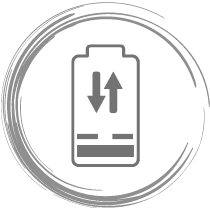Lithium-ion batteries have become a critical component of modern energy storage systems, from consumer electronics to electric vehicles and renewable energy storage. One of the key metrics in understanding the performance and longevity of lithium-ion batteries is the Depth of Discharge (DoD). In this article, we will explore what DoD is, how it impacts battery life, and its significance in lithium-ion battery applications.
What is Depth of Discharge (DoD)?
Depth of Discharge refers to the percentage of a battery’s capacity that has been used or discharged relative to its full capacity. For example, if a 1000mAh battery has discharged 300mAh, it has a DoD of 30%. The DoD is the inverse of the State of Charge (SoC), which measures how much energy is left in the battery. When a battery has a DoD of 30%, its SoC is 70%.
Impact of DoD on Battery Life
Lithium-ion batteries typically last longer when cycled at lower depths of discharge. For instance, a battery cycled at 20% DoD will typically have a much longer lifespan than one cycled at 80% DoD. This is because deep discharges place more strain on the battery’s internal structure, accelerating degradation and loss of capacity.
Optimizing DoD for Maximum Lifespan
For applications like energy storage systems or electric vehicles, managing the DoD is crucial for maximizing battery lifespan. By keeping the DoD at lower levels and avoiding complete discharges, users can prolong battery life and reduce the need for frequent replacements.


